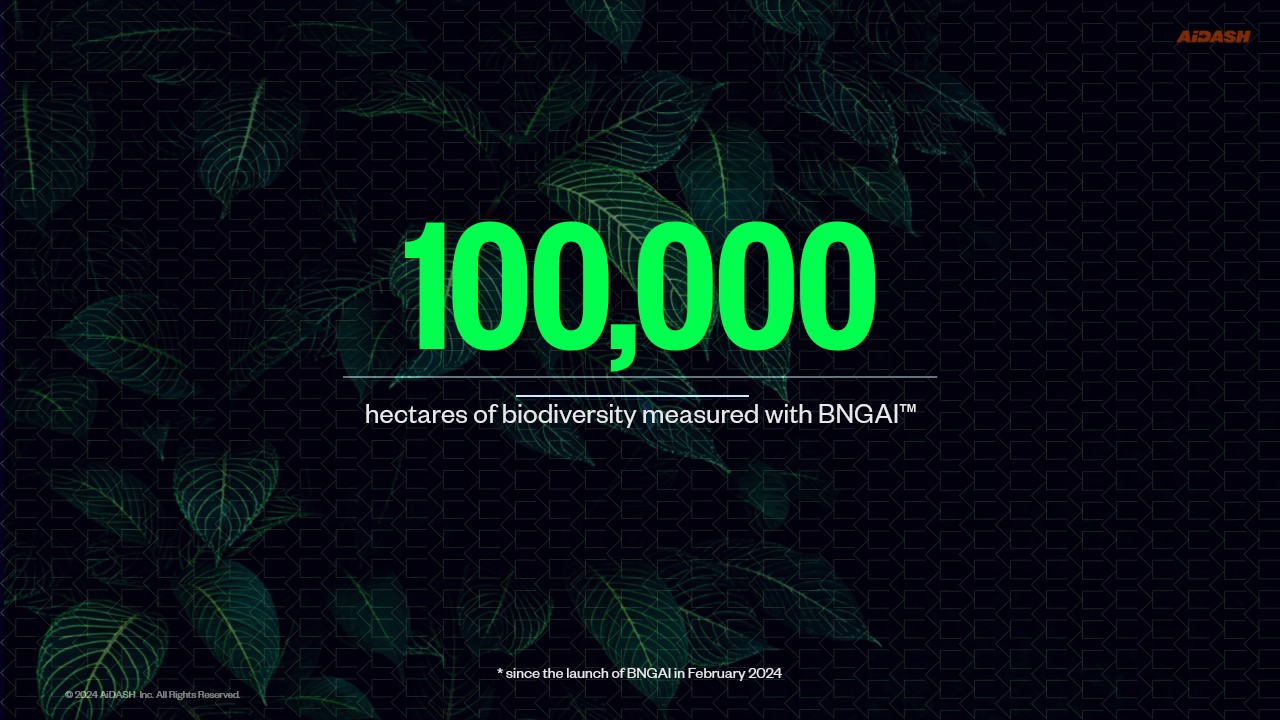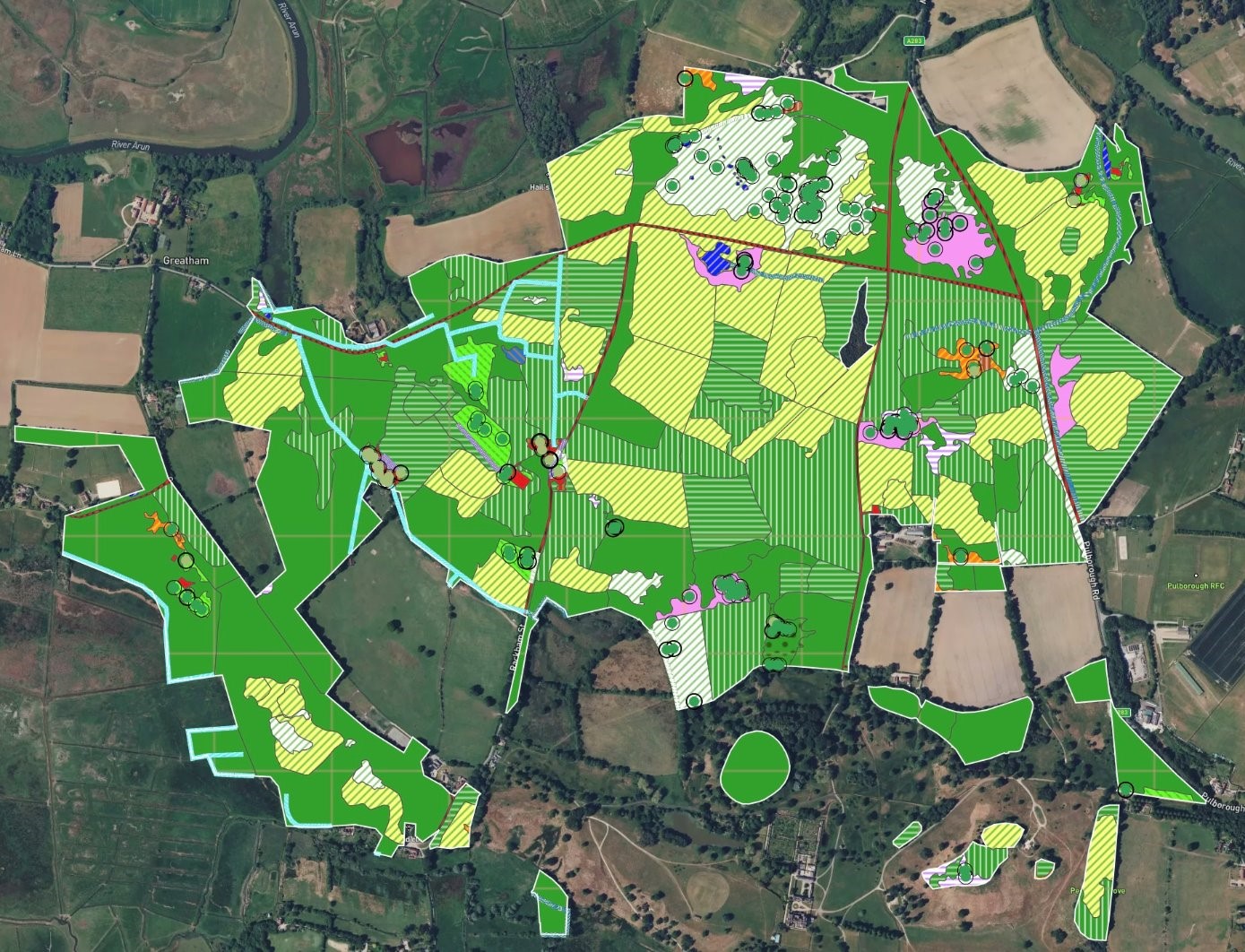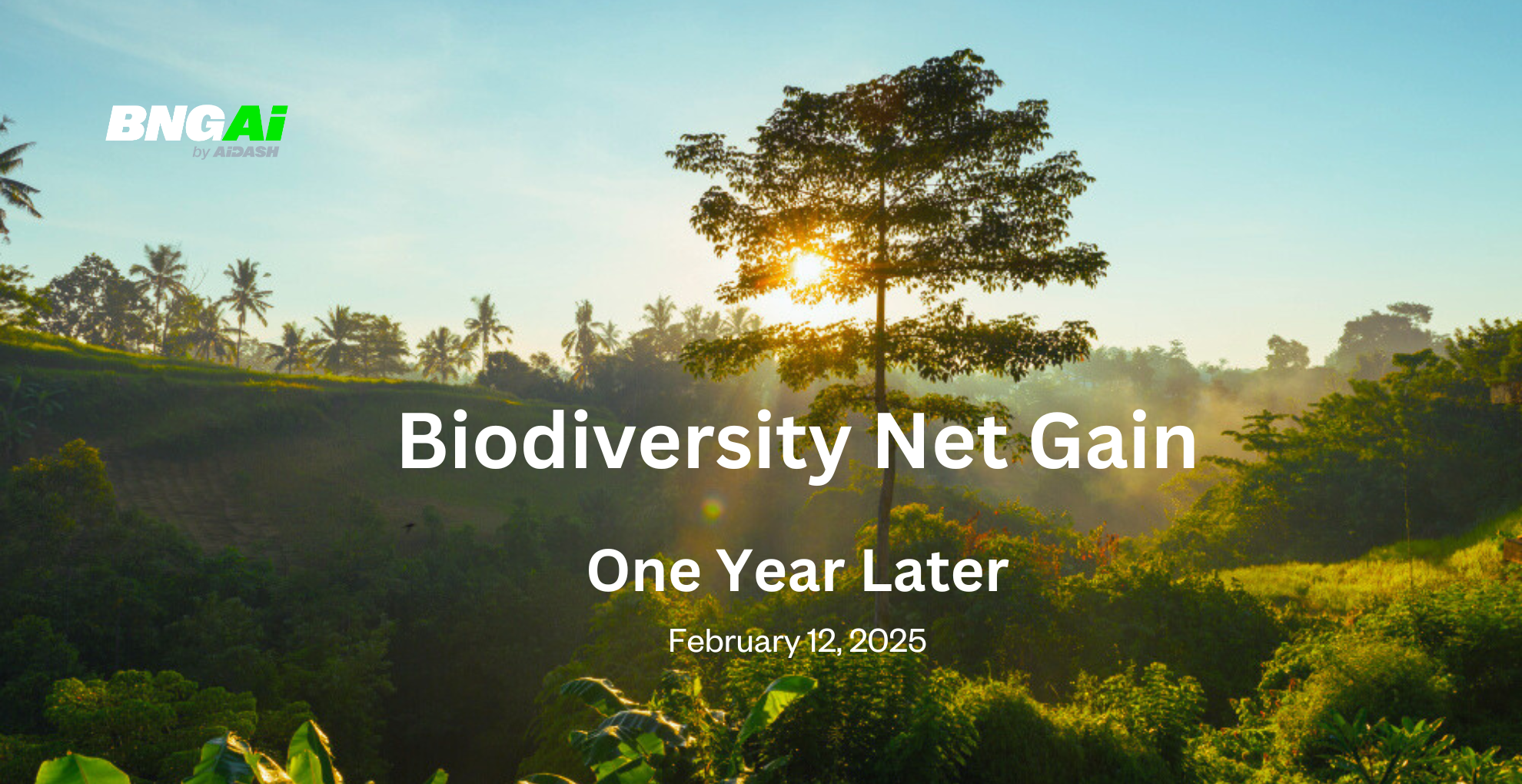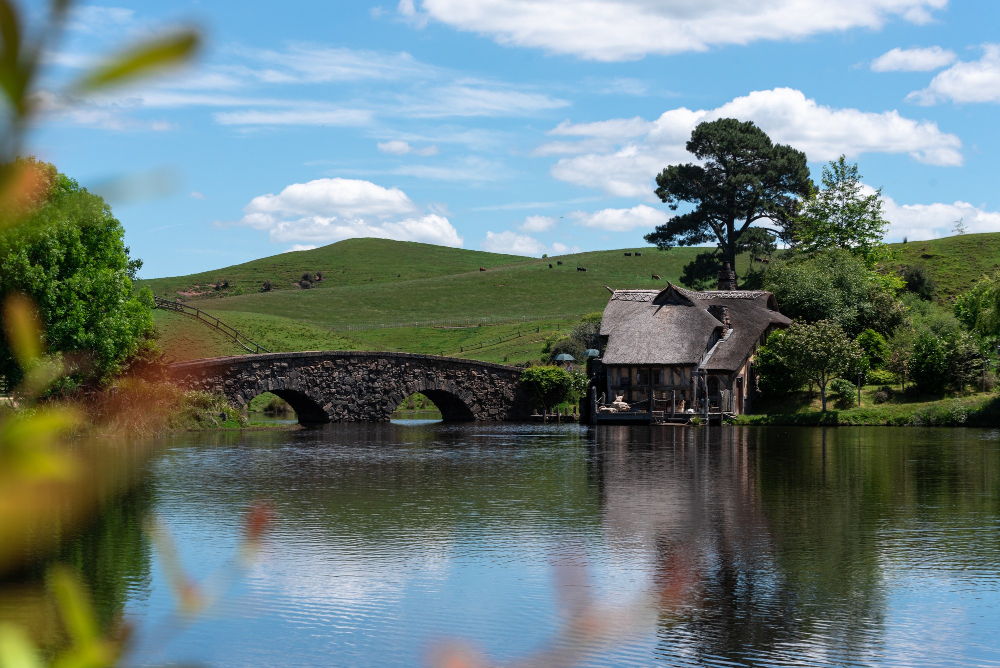- Blogs
- A Year in Biodiversity Net Gain: Reflections on Impact, Challenges and Progress
Biodiversity Net Gain (BNG) officially came into force on February 12, 2024. Today marks one year since the Biodiversity Net Gain (BNG) law was passed, a landmark policy aimed at reversing nature’s decline. Designed to ensure that new developments leave biodiversity in a better state than before, BNG has become a critical tool for achieving the UK’s legally binding target to halt nature’s decline by 2030.
The Positive Impact of BNG: A Global Model for Nature and Development
One of BNG’s biggest strengths is its potential to unlock significant private investment for conservation. Tackling biodiversity loss is a multi-billion-pound challenge, with the Green Finance Institute estimating a funding need of up to £9.7bn per year by 2030. Neither the government nor local authorities can meet this demand alone, making BNG a crucial mechanism to mobilise private sector funding for habitat restoration and protection.
As one of the first policies of its kind, BNG positions England as a global leader in sustainable development. With other countries closely watching its implementation, the policy not only has the potential to reshape land use planning in the UK but also to influence nature-positive economic models worldwide. If refined and strengthened, BNG could serve as a long-term driver of biodiversity restoration, carbon sequestration, and green investment, setting a new global standard for balancing development with nature recovery.
Loopholes and Weak Links in BNG Implementation
While the intent behind BNG is strong, practical implementation has revealed vulnerabilities that need to be addressed in 2025 to assure long-term success. As the first year of BNG implementation unfolds, a few loopholes, weak links, and industry concerns began to emerge and thus could not be ignored. A recent AiDASH survey of environmental professionals revealed key challenges—ranging from data accessibility issues to a shortage of skilled ecologists and ethical dilemmas. Despite these setbacks, technology and policy refinements offer a way forward.
1. Gaps in data accessibility and usability
One of the biggest concerns highlighted in the survey is the difficulty in obtaining the right information. Two-thirds of respondents reported struggling to find the data required for identifying and defining habitats, while 63% found it difficult to access data on the strategic significance of habitats.
2. The shortage of skilled ecologists
A striking 89% of survey respondents flagged a “substantial and concerning” shortfall in experienced ecologists to deliver BNG, with only a quarter finding sufficient training opportunities available to upskill. This talent gap presents a major bottleneck in successful BNG implementation.
3. The shortage of skilled ecologists
With 73% of ecologists reporting feeling “pressured, rushed, or stretched” when delivering BNG, and more than half raising ethical concerns about how the metric is applied, it’s clear that improvements are needed to make biodiversity net gain a successful strategy it has the potential to be.
One concern is the risk of “perverse outcomes”, where the push to meet the 10% net gain requirement leads to inaccurate or impractical biodiversity improvements. There is also growing unease over potential loopholes and exemptions, with campaigners warning that misuse of these could jeopardise the 2030 target.
4. Mass exemptions and potential policy exploitation
BNG is not universally applied—certain developments, including small sites and some brownfield projects, are exempt. However, campaigners warn of “mass abuse” of these exemptions, which could significantly undermine the policy’s impact. If exemptions are misused, developers may legally avoid their BNG obligations, ultimately jeopardising the 2030 biodiversity targets.
Academics and conservation groups stress that BNG is still in its infancy and needs refinement, not replacement. They highlight early evidence that BNG is working—not only by incentivising habitat restoration but also by deterring harmful development on valuable ecological sites. Additionally, with other countries closely monitoring BNG as a model for nature markets, scrapping or weakening the policy could send damaging signals internationally.
As BNG enters its second year, the key challenge will be strengthening its implementation while ensuring it remains a driver of both nature recovery and responsible development.
A Year of Innovation and Growth with BNGAI™
Despite these challenges, 2024 has been a year of innovation and collaboration in BNG. AiDASH’s AI-powered solution, BNGAI™, has played a crucial role in easing the burden on developers, ecologists, and land managers by providing accurate, scalable, and efficient biodiversity assessments. Over the past year, BNGAI™ has helped address key barriers in BNG implementation.
1. How BNGAI™ is transforming BNG
Since its launch in February 2024, BNGAI™ has been used to measure 100,000 hectares of biodiversity across 20,000 sites. It is the world’s first satellite-powered sustainability management solution trusted by industry leaders across UK and globally.

Here’s why 300+ property developers, 100+ ecologists and 15+ local planning authorities have put their trust in BNGAI™.
- AI-driven habitat classification – Automates desktop surveys, allowing ecologists to focus on high-value tasks.
- High-resolution satellite imagery (2.5–30 cm) – Greater accuracy than desktop surveys for faster analysis.
- Seamless integration with a proprietary field app – Streamlines ground surveys and pre-populates a DEFRA-compliant report.
2. Supporting ecologists with an exclusive partner program
With a severe lack of experienced ecologists, BNGAI™ acts as a force multiplier, enabling professionals to do more with fewer resources. Our Ecologist Partner Program is tailored to simplify their workflow. From automated desktop surveys to simplifying field surveys with the BNGAI™ mobile app, there are a host of solutions and benefits for ecologists when they partner with BNGAI™.
- Direct connections to local survey opportunities
- Exclusive partner perks and professional development
- Personalised support and hands-on training
3. Real-world case studies showing real impact
BNG’s impact is not just theoretical—real-world case studies show how AI-driven solutions are revolutionising biodiversity management and making compliance more efficient. Two standout examples illustrate how BNGAI™ by AiDASH is helping organisations streamline habitat assessments, optimise decision-making, and drive meaningful biodiversity improvements.
Case Study 1: Revolutionising natural capital management with AI
Affinity Water, in partnership with Atkins Réalis and AiDASH, implemented BNGAI™ to transform its approach to natural capital management. By utilising remote sensing technology, Affinity Water could efficiently collect, classify, and analyse environmental data across its vast landholdings.
This AI-powered approach streamlined regulatory compliance, improved strategic decision-making, and helped the company achieve its environmental objectives more effectively. The case demonstrates how AI can enhance BNG implementation at scale, reducing reliance on time-consuming manual assessments.
Case Study 2: Remotely sensing habitat condition for landscape recovery
The Eelscapes Landscape Recovery scheme, hosted by the Wildfowl & Wetlands Trust (WWT) and funded by DEFRA, leveraged a collaborative AI solution developed by Atkins Réalis and AiDASH.
Using BNGAI™ and the River Restoration Studio, the project integrated satellite data with on-the-ground surveys to classify habitats, assess river conditions, and refine biodiversity models, enabling:
✅ High-accuracy, automated habitat assessments aligned with BNG requirements
✅ Cost- and time-efficient monitoring, reducing reliance on seasonal surveys
✅ Repeatable, verifiable methodology for long-term biodiversity tracking
These case studies highlight how BNGAI™ is bridging the gap between policy and implementation, making BNG compliance faster, more accurate, and more accessible for organisations across sectors using technology. As BNG continues to evolve, AI-driven solutions will play an increasingly critical role in ensuring that biodiversity recovery is both measurable and impactful.

Looking Ahead: The Future of BNG and BNGAI™
While 2024 has been a foundational year for BNG, we recognise that there is still much work to be done. Mark Nason, Head of Professional Practice at Chartered Institute of Ecology and Environmental Management (CIEEM), has emphasised the need for better access to training, data, and AI tools to improve BNG implementation.
At AiDASH, we remain committed to advancing AI-driven solutions to make biodiversity monitoring more efficient, accessible, and scientifically robust. By continuing to work with policy makers, ecologists, and developers, we can help ensure that BNG delivers meaningful, lasting benefits for nature.
As we move forward, we invite stakeholders across the sector to collaborate, innovate, and push for positive change—because biodiversity isn’t just a policy requirement, it’s a shared responsibility and an opportunity for impact.
Here’s to another year of progress, learning, and commitment to a nature-positive future!
Need help with BNG?
Check back regularly for the latest insights and news. Learn how AiDash Biodiversity Net Gain Management System™ (BNGAI™) can help with 10% BNG planning for urban projects. Start your first BNG project now!
Read how BNGAI™ by AiDASH set a new benchmark for natural capital management for Affinity Water here.
Stay ahead in BNG
Join our monthly newsletter for helpful tips on BNG and how to stay ahead of the curve.
You May Like
-
test
Blog
-

-

-

-


Enjoyed the read?
Join our monthly newsletter for helpful tips on BNG and how to stay ahead of the curve.


